Class Mammalia
Order Rodentia
Family Heteromyidae
Chaetodipus sp.—Spiny Pocket Mice // Chaetodipus baileyi—Bailey's Pocket Mouse // Chaetodipus californicus—California Pocket Mouse // Chaetodipus formosus—Long-tailed Pocket Mouse // Chaetodipus hispidus—Hispid Pocket Mouse // Chaetodipus intermedius—Rock Pocket Mouse // Chaetodipus penicillatus—Desert Pocket Mouse
Synonyms. Perognathus (part). For many years, Chaetodipus was considered a subgenus of Perognathus until elevated to generic status (Hafner and Hafner 1983).
Chaetodipus differs from Perognathus especially in the smaller bullae (less than half the transverse distance across the skull at the interparietal compared to more than half in Perognathus).
Dalquest and Stangl (1984b), looking for ways of identifying Perognathus (which at the time included Chaetodipus) from Fowlkes Cave, took a number of measurements of 25 adult specimens of each of five species now occurring in the general region. Their maximum and minimum measurements of the alveolar tooth rows of the lower jaws are given in Table 1, with updated nomenclature. They also measured lower incisor breadth, finding that it exceeded 0.65 mm in hispidus, whereas the breadths in the other four species were less than 0.60 and overlapped extensively. They concluded that hispidus could be identified on the basis of breadth of the lower incisor and that most or all of dentaries with the alveolar cheek tooth row less than 3.15 mm likely represented P. flavus.
| Species | Length of Lower Alveolar Tooth row |
|---|---|
| Chaetodipus hispidus | 4.0-4.75 mm |
| Chaetodipus nelsoni | 3.35-3.70 mm |
| Chaetodipus intermedius | 3.25-3.70 mm |
| Chaetodipus eremicus | 3.25-3.90 mm |
| Perognathus flavus | 2.65-3.30 mm |
Only four species of Chaetodipusare recognized from Pleistocene deposits in the eastern portion of the region, but this likely is due in part to the difficulty in identifying fragmentary material to species.
Literature. Dalquest and Stangl 1984b; Hafner and Hafner 1983.
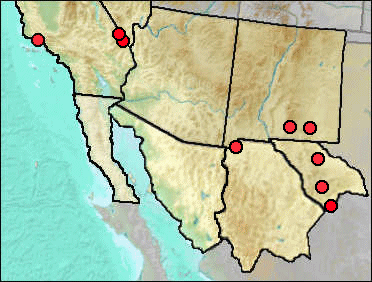
Various specimens can be identified as Chaetodipus, but have not been assigned to species. The specimens from Shafter #1B and Tunnel View #12 were listed as Perognathus penicillatus-type by Van Devender and Bradley (1990).
Sites.
Wisconsin: Carpinteria (Wilson 1933: cf.).
Early/Early-Mid Wisconsin: Rm Vanishing Floor (Harris 1993c).
Mid Wisconsin: U-Bar Cave (Harris 1987).
Late Wisconsin: Antelope Cave (Reynolds, Reynolds, Bell, and Pitzer 1991); Shafter #1B (Van Devender and Bradley 1990); U-Bar Cave 14-15 ka (Harris 1989).
Late Wisconsin/Holocene: Fowlkes Cave (Dalquest and Stangl 1984b); Kokoweef Cave (Reynolds, Reynolds, et al. 1991); Pendejo Cave (Harris 2003); Tunnel View #12 (Van Devender and Bradley 1990).
Literature. Dalquest and Stangl 1984b; Harris 1987, 1989, 1993c, 2003; 1991b; Reynolds, Reynolds, et al. 1991; Reynolds, Reynolds, Bell, and Pitzer 1991; Van Devender and Bradley 1990; Wilson 1933.
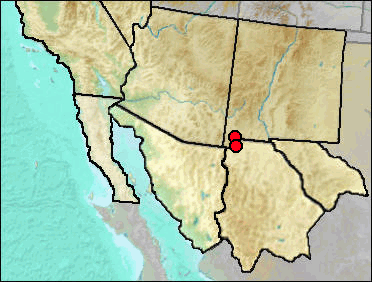
Chaetodipus baileyi is a relatively large pocket mouse that enters New Mexico along the Arizona border; it ranges through the southern half of Arizona and most of Sonora west of the Sierra Madre Occidental.
Sites.
Late Wisconsin/Holocene: Howell's Ridge Cave (Harris 1993c: cf.); U-Bar Cave (Harris 1993c).
Literature. Harris 1993c.
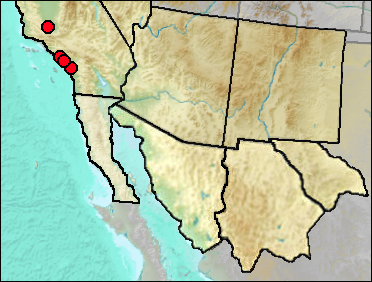
The current range is in portions of California and Baja California.
Sites.
Sangamon: Newport Bay Mesa (Jefferson 1991b).
Wisconsin: Costeau Pit (Jefferson 1991b).
Mid/Late Wisconsin: Rancho La Brea (Stock and Harris.
Late Wisconsin: Maricopa (Jefferson 1991b).
Literature. Jefferson 1991b; Stock and Harris 1992.
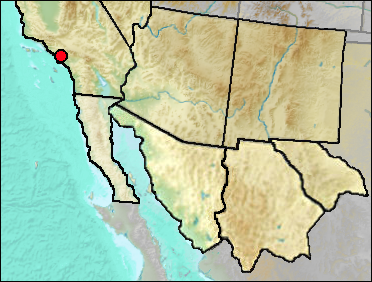
This is basically a Great Basin form, though it extends south well into the Baja California peninsula. It does not approach coastal California today.
Sites.
Sangamon: Naval Housing Unit (Jefferson 1991b: cf.).
Literature. Jefferson 1991b.
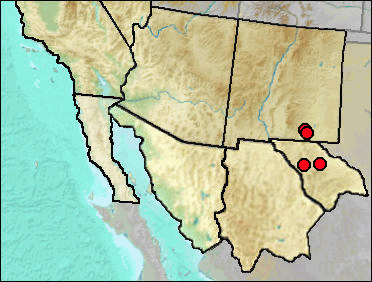
Although primarily an eastern species, the Hispid Pocket Mouse does extend across our area into southeastern Arizona and south into Mexico. Much of the Big Bend country and adjacent Mexico lacks the mouse at present, however.
Sites.
Mid/Late Wisconsin: Dark Canyon Cave (Tebedge 1988).
Mid/Late Wisconsin/Holocene: Sierra Diablo Cave (UTEP).
Late Wisconsin: TT II (Harris 1993c).
Late Wisconsin/Holocene: Balcony Room (UTEP); Beyond Bison Chamber (Harris 1970: ?), Fowlkes Cave (Dalquest and Stangl 1984b).
Literature. Dalquest and Stangl 1984b; Harris 1970a, 1993c; Tebedge 1988.
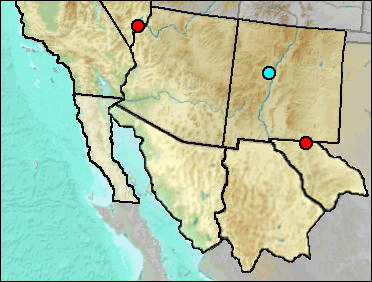
As per the common name, this pocket mouse is almost invariably found in rocky situations, whereas the Chihuahuan Pocket Mouse (C. eremicus) is equally limited to sandy substrata (C. eremicus east of the continental divide has been known as C. penicillatus until the mid 1990s, when that species was split).
Harris and Findley (1964) identified this taxon from the Isleta Caves, and Harris (1993c) repeated that record. At present, this taxon cannot be shown to occur in the caves pre-Holocene. The Holocene record is included below (and mapped in blue as rejected)
Sites.
Late Wisconsin: Vulture Cave (Mead et al. 2005: cf.)
Late Wisconsin/Holocene: Williams Cave (Ayer 1936: cf.).
Holocene: Isleta Caves (rejected).
Literature. Ayer 1936; Harris 1993c; Harris and Findley 1964.
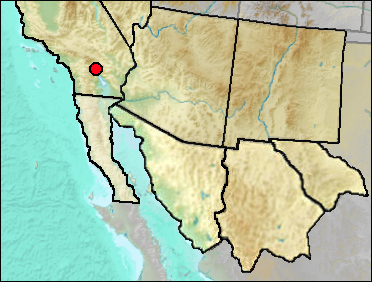
The Desert Pocket Mouse is largely limited to a non-rocky substratum.
Sites.
Late Wisconsin: Mountain View Country Club (Jefferson 2014).
Literature. Jefferson 2014.
Last Update: 12 May 2015